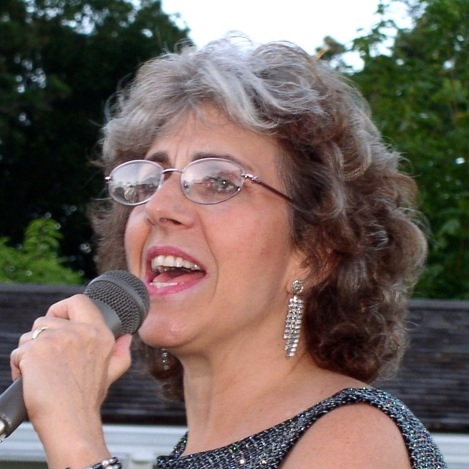
Jezra Kaye
Jezra Kaye is an acclaimed New York public speaker coach, keynote speaker, and President of Speak Up for Success. She has developed approaches that have helped hundreds of her private coaching and corporate clients deliver successful presentations, workshops, and speeches.
Jezra is the author of three books on business communications, Speak Like Yourself … No, Really!, Interview Like Yourself … No, Really! and 100 Top Public Speaking Tips: The Book.
In addition, she is the co-author of Managing the Unmanageable: How to Motivate Even the Most Unruly Employee, and the author of a novel, The Tattooed Heart.
Jezra lives in Brooklyn NY with her husband, a jazz musician. Their daughter lives in Oakland CA and recently posted her thoughts on community ownership and the movie Black Panther.
Our Children Were Going To Be Mixed . . .
Reading Dr. Gramma Karen’s column, “Grandparents Feel Hurt and Snubbed,” prompted me to write this column.
When I met my husband in 1976, there weren’t many interracial couples in the Boston area.
Still, it seemed to me that we’d dodged a bullet: Nine years earlier, before the Supreme Court’s Loving v. Virginia decision, it would have been illegal for us to date (or technically, to have sex) in much of the U.S..
And though plenty of people had comments for us — black men telling Jerome how lucky he was, white people telling me I should be ashamed of myself — we didn’t worry much about physical danger. There were places you didn’t go, people you didn’t talk to, but nothing like what we would have faced in, let’s say, the early 1960s.
So while many of the people around us were focused on race, we were more preoccupied with what seemed like the bigger differences of class (professional vs. working), religious upbringing (Jewish vs. Jehovah’s Witness), region (New England vs. the deep South, where his parents grew up), and most of all, temperament (passionate and neurotic vs. steady and stoic).
Still, as we crawled closer to a commitment, I began to envision the better world our children would live in.
And one thing I was sure about: Our children were going to be mixed. No child of mine was ever going to describe herself as “Black, with a white parent” — a phrase that I associated with the double whammy of being ignored or abandoned by your white family and labeled by an America that believes in the “one drop rule” and has enslaved, subjugated, and oppressed people accordingly.
When our daughter was born in New York City in 1989, it looked like “mixed” would be an easy identity to hold on her behalf. On the one hand, official forms still had mutually exclusive boxes for checking off whether you were “black” or “white.” (I sent one back to the NYC Department of Education three times with angry letters explaining why I wouldn’t be checking just one box for her).
On the other hand, biracial people were becoming more visible.
During our daughter’s growing up years, the white pop band “Spice Girls” had a mixed-race member, Mel B (regrettably nicknamed “Scary Spice,” because a light-skinned Black singer apparently terrified someone). Tia and Tamera Mowry starred in the TV sitcom, “Sister, Sister,” where the drama was about their sisterhood, not their mixed-race status.
Yankee’s shortstop Derek Jeter was the toast of New York City; sportscasters talked about how cute his white mother and Black father looked in the bleachers. And “The Bodyguard,” a 1992 movie about a romance between Whitney Houston and Kevin Costner portrayed them as doomed but sympathetic lovers. (This was a big step up from a 1959 movie, “The World, The Flesh, and The Devil,” in which the Swedish-American actress Inger Stevens and Harry Belafonte believe they are the last two people left alive on earth yet, in spite of their great attraction, decline to re-populate the world because race-mixing would just be wrong).
It was also easy to call our daughter “mixed” in the early ‘90s because some sort of critical mass was brewing.
Four of twenty kids in our daughter’s Brooklyn pre-school class had one Black parent and one white one. Young adults came up to me all the time and said, “I looked like her when I was a baby,” by which they meant, “I’m biracial, like your kid!” There was a heady sense of barriers falling; and by the 2010 U.S. Census, when it was possible to declare this for the first time, 9 million people described themselves as multiracial.
Of course, it was still America.
We had to explain to our daughter why some Black and white people don’t like each other, and why some white children gaped at her. But by age ten, she was tired of talking about race; and my own determination to view her as mixed held strong until the day, in 2014, when we joined her and some friends at Kara Walker’s extraordinary “Sugar Baby” exhibit.
Walker’s naked, 35-foot-high depiction of (in the words of art critic Hilton Als) “mammy-as-sphinx” was sculpted from sugar and sited in Brooklyn’s Domino Sugar Factory, which was about to be sold to developers. Slaves in the Caribbean worked sugar plantations, and that brutal history of forced labor was writ large on the female body Walker created — a figure, who, as Als wrote, “crouches in a position that’s regal and yet totemic of subjugation.” She was also pointedly sexualized, another comment on subjugation that was lost on the large number of visitors who took leering selfies in front of her outsized vulva and anus.
At that point, my daughter had been embracing Black culture and her own Black identity for years. But being in the presence of Walker’s art was what finally made me realize that — like millions upon millions of mothers who didn’t have the power to protect or name their children — I was only kidding myself if I thought her identity was in my hands.
In that place, I finally began to see my daughter, in the light of history, as a Black woman with a white mother.
Today, it’s hard for me to recall why I was so afraid of that idea. Did I think that, if she was Black, my role in her life would be erased? That my half of her gene pool would suddenly disappear?
The New York Times recently ran a brilliant op-ed by Anna Holmes, the founder of Jezebel (a popular website for discussions of gender, race and culture). In it, she reflects on why people with one Black and one white parent have been so successful. She talks about them being a less threatening (to white folks) shade of Black, the benefits of “white proximity,” and the advantages of being able to negotiate both worlds.
Holmes quotes Erin Cloud, a public defender, who questions the relative privilege of being mixed, and whether her success holds other people back. But Cloud also says, “I am a black woman. I see myself as a black woman, but I also have to be honest. I love my mother. I can’t say for many of my black friends that they deeply, intimately, without any bounds love a white person.”
My daughter emailed that quote to me. I printed it up and taped it to my mirror, a reminder of powerful alchemy.
In my family, Black people and white people love each other without reservation.
And though that won’t solve America’s racial problems, I’m grateful. Love is a good thing, no matter how you label it.
Ask Dr. Gramma Karen is published every other Tuesday.
E-mail queries to [email protected].
Karen L. Rancourt’s most recent book is,
Ask Dr. Gramma Karen, Volume II: Savvy Advice to Soothe Parent-Grandparent Conflicts.



